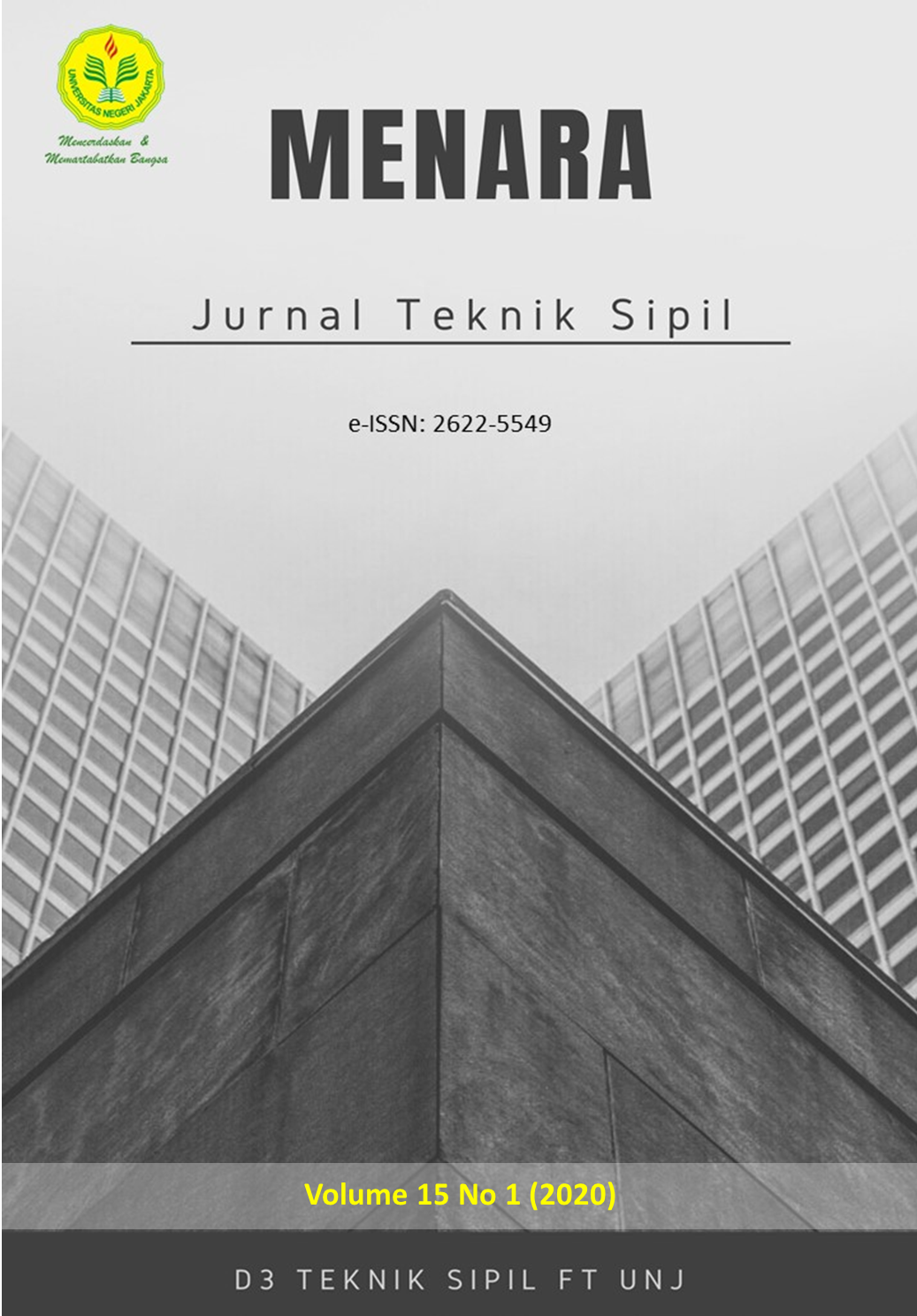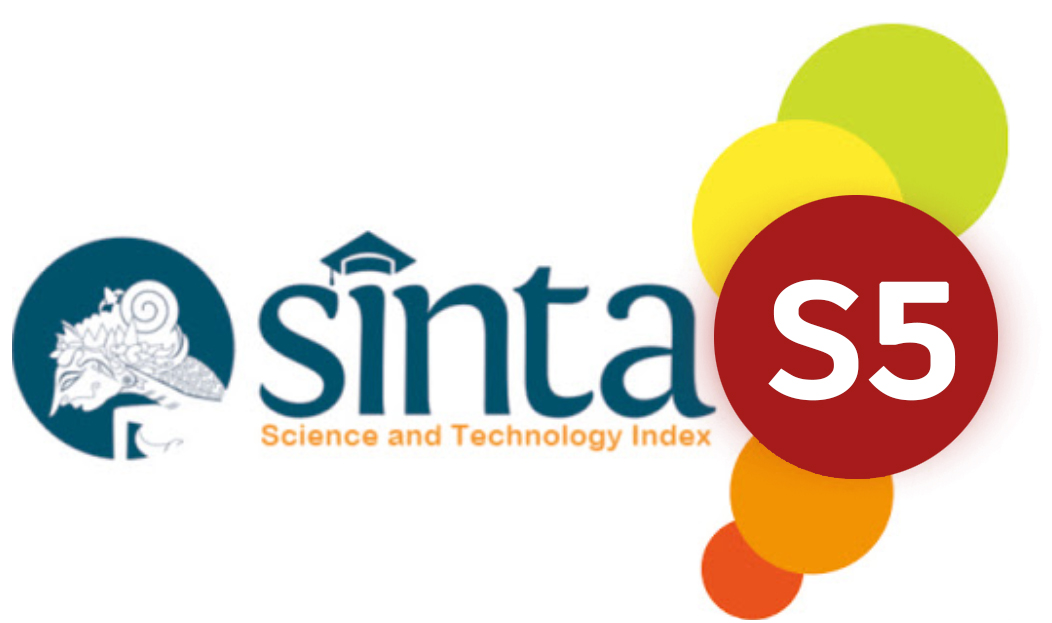PEMANFAATAN ABU DASAR (BOTTOM ASH) DAN KAPUR SEBAGAI PENGGANTI SEBAGIAN SEMEN PADA PAVING BLOCK SESUAI DENGAN SNI 03-0691-1996
DOI:
https://doi.org/10.21009/jmenara.v15i1.18126Keywords:
paving block, B3 waste, bottom ash, lime, cementAbstract
The purpose of this research is to utilize bottom ash and lime as substitute partial cement to know quality of product based on SNI 03-0691-1996, so that can reduce unused B3 waste. This research used an experimental method, the population of paving block using bottom ash and lime as substitute partial of cement within 5 percentage 25%, 30%, 35%, 40%, and 45% of the amount of cement used in the normal mix. This research examined the six test, namely: compressive test, wear resistance, resistance to sodium sulfate, water absorption and testing measure. The result showed that the difference of quality of product which have different percentage.Percentage 25% and 30% showed B quality based on SNI 03-0691-1996. Percentage 35% showed C quality and 40% showed a D quality based on SNI 03-0691-1996. Percentage 45% showed result below quality based on SNI 03-0691-1996. The optimum paving block produced is 30% which has average 20,66 MPa result on compressive test and maximum 21,86 MPa, 0,086 mm/minute maximum for wear resistance from 35% percentage and 2,25% is maximum amount for water absorption test from 30% percentage. In this research all product which used bottom ash and lime has average 0.744% resistance of sodium sulfate.
References
Hanifah, "Pengembangan Lembar Kerja Siswa Berbasis Inkuiri Terbimbing Untuk Melatihkan Keterampilan Proses Sains Siswa pada Sub Pokok Bahasan Kontinuitas.," Jurnal Inovasi Pendidikan Fisika , pp. 60-66, 2017.
D. D. Pradipta, "Pengembangan Lembar Kerja Siswa Berbasis Inkuiri Terbimbing untuk Melatihkan Keterampilan Poses sesuai Kurikulum 2013," Jurnal Inovasi Pendidikan Fisika , vol. 06, no. 3, pp. 231-236, 2017.
W. T. Utari, "Pengembangan LKS Praktikum Berbasis Inkuiri Terbimbing pada Materi Larutan Penyangga di SMA Negeri 4 Sungai Raya," Ar-Razi Jurnal Ilmiah , vol. 6, no. 1, 2018.
P. Auliyani, "Penerapan LKS Berbantuan Virtual Laboratory dalam Pembelajaran Inkuiri Terbimbing terhadap Pencapaian Kompetensi Siswa," Pillar of Physics Education, vol. 11, no. 1, pp. 65-72, 2018.
Sugiyono, Metodologi Penelitian Pendidikan Pendekatan Kualitatif, Kuantitatif, dan RnD, Bandung : Alfabeta, 2013.
D. Saepuzaman and Y. Yustiandi, “Pengembangan Alat Peraga dan Lembar Kerja Percobaan Penentuan Koefisien Restitusi untuk Meningkatkan Kemampuan Siswa Bereksperimen”, jpppf, vol. 3, no. 2, pp. 145 - 150, Dec. 2017.
H. Anis and A. M. Yusuf, “Implementasi Lembar Kerja Berbasis Pertanyaan Produktif untuk Meningkatkan Kemampuan Berinkuiri Siswa SMA”, jpppf, vol. 2, no. 2, pp. 23 - 30, Dec. 2016.
S. Syahrowardi and A. H. Permana, “Desain Handout Multimedia Menggunakan 3D Pageflip Professional untuk Media Pembelajaran pada Sistem Android”, jpppf, vol. 2, no. 1, pp. 89 - 96, Jun. 2016.
H. Kurniawati, D. Desnita, and S. Siswoyo, “Pengembangan Media Pembelajaran Berbasis 3D PageFlip Fisika untuk Materi Getaran dan Gelombang Bunyi”, jpppf, vol. 2, no. 1, pp. 97 - 102, Jun. 2016.
F. Bakri, B. Z. Siahaan, and A. H. Permana, “Rancangan Website Pembelajaran Terintegrasi dengan Modul Digital Fisika Menggunakan 3D PageFlip Professional”, jpppf, vol. 2, no. 2, pp. 113 - 118, Dec. 2016.
Downloads
Published
Issue
Section
License
Authors who publish with this Journal agree to the following terms:
- Author retain copyright and grant the journal right of first publication with the work simultaneously licensed under a creative commons attribution licensethat allow others to share the work within an acknowledgement of the work’s authorship and initial publication of this journal.
- Authors are able to enter into separate, additional contractual arrangementfor the non-exclusive distribution of the journal’s published version of the work (e.g. acknowledgement of its initial publication in this journal).
- Authors are permitted and encouraged to post their work online(e.g. in institutional repositories or on their websites) prior to and during the submission process, as it can lead to productive exchanges, as well as earlier and greater citation of published works.











